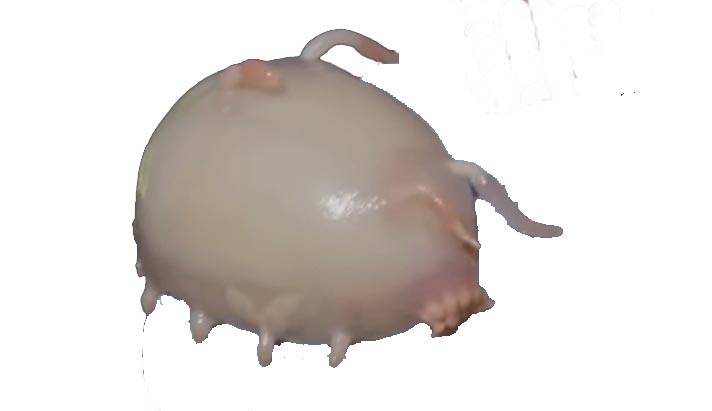Sea Pigs

Sea pigs are not actually pigs but rather a type of deep-sea cucumber belonging to the genus Scotoplanes. They are peculiar-looking marine creatures found in the abyssal plains of oceans around the world, typically at depths ranging from 3000 to 6000 meters.
Few facts about the sea pig:
- Appearance: Sea pigs have a unique appearance that sets them apart from other marine animals. They are small, typically measuring around 10 to 15 centimeters in length. Their bodies are elongated and cylindrical, resembling a plump sausage. They lack the typical cucumber-like body shape found in other sea cucumbers. Sea pigs have several rows of tube feet arranged along the length of their body, giving them a somewhat segmented appearance. These tube feet are used for locomotion and feeding.
- Color: They come in various shades of pink, purple, and red, with some individuals displaying a mottled pattern. Their coloration helps them blend into the dark depths of the ocean floor.
- Feeding Appendages: Sea pigs have a distinctive feeding apparatus at one end of their body. This feeding structure consists of branching tentacles that they extend outward to collect organic particles from the sediment on the ocean floor. These tentacles are equipped with tiny tube feet that help in grasping and manipulating food particles.
- Behavior: Sea pigs are detritivores, meaning they primarily feed on decaying organic matter, including marine snow and other organic debris that settles on the ocean floor. They play an important role in recycling nutrients in the deep-sea ecosystem.
- Habitat: As inhabitants of the deep sea, sea pigs are adapted to extreme conditions, including near-freezing temperatures, high pressure, and complete darkness. They are typically found in areas with soft sediment, such as abyssal plains and deep-sea trenches.
- Adaptations: Sea pigs have evolved several adaptations to survive in their deep-sea environment. These adaptations include a slow metabolism to conserve energy, a flexible body that allows them to move across the soft sediment, and sensory structures that help them locate food in the darkness of the deep ocean.
Overall, sea pigs are fascinating creatures with a unique appearance and ecological niche in the deep-sea ecosystem. Despite their unassuming name, they play a vital role in the health of deep-sea habitats.

